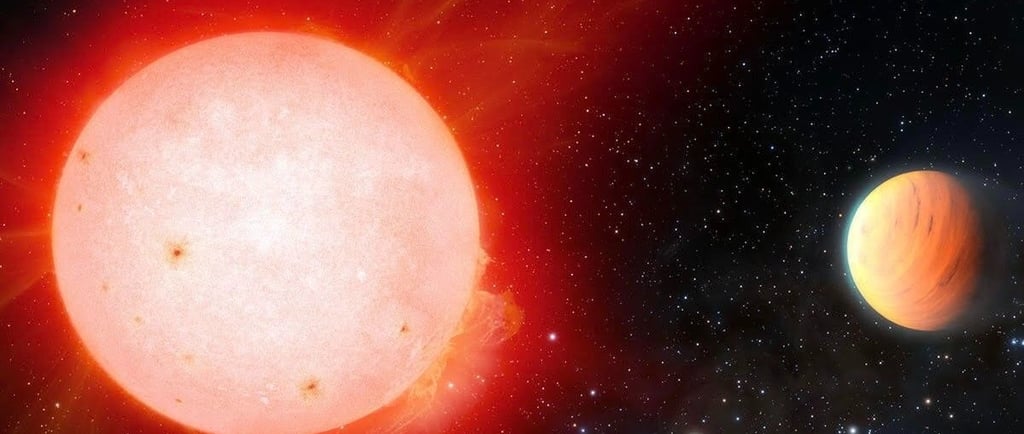TOI-3757 B: The Extraordinary Marshmallow Planet


Introduction to TOI-3757 b
In the vast expanse of our universe, scientists continue to unveil fascinating celestial bodies that challenge our understanding of planetary formation and characteristics. One such unusual entity is TOI-3757 b, a gas giant exoplanet that recently caught the attention of astronomers due to its remarkably low density. Orbiting an M dwarf star, this alien world has been described as having the density of a marshmallow, making it a prime subject for planetary studies.
Characteristics of TOI-3757 b
TOI-3757 b has been classified as the lowest density planet detected orbiting an M dwarf star thus far. With a size that is approximately 26.8% that of Jupiter, this whimsical planet has an orbital period of just 3.4 days, completing a full revolution around its host star in the blink of an eye—by terrestrial standards, at least. Such rapid orbits often occur in close-knit systems where gravitational forces play a complicated role in the formation and stability of planets.
The Significance of Discovering TOI-3757 b
The discovery of TOI-3757 b presents an opportunity to broaden our understanding of gas giants, particularly those orbiting M dwarf stars. M dwarfs are cooler and smaller than our Sun but are abundant in the Milky Way Galaxy, making these stars particularly intriguing for exoplanet research. Studying the properties of TOI-3757 b may help scientists refine models of planetary density and composition, ultimately improving the broader understanding of gas giant formation in the universe.
The unique characteristics of TOI-3757 b also raise questions about how such a low-density planet could exist in a stable orbit around an M dwarf. Its marshmallow-like density suggests that it may have a significant proportion of lighter elements or gases, which may contribute to its fluffy consistency. This aspect of its composition could offer a new lens through which to examine the physics of planetary evolution and atmospheric retention.
As researchers continue to engage with data regarding TOI-3757 b, it will be essential to investigate the atmospheric properties and potential weather patterns of this extraordinary planet. Such observations could reveal insights into how gas giants develop and maintain their atmospheres under different stellar conditions.
In summary, TOI-3757 b stands out as a mesmerizing example of the diversity of planets in our universe. Its unusual density and rapid orbital characteristics invite further exploration and study, spotlighting the ongoing advancements in astrophysics and exoplanetary science. Moving forward, this marshmallow planet may unlock new chapters in our quest to understand the cosmos.
